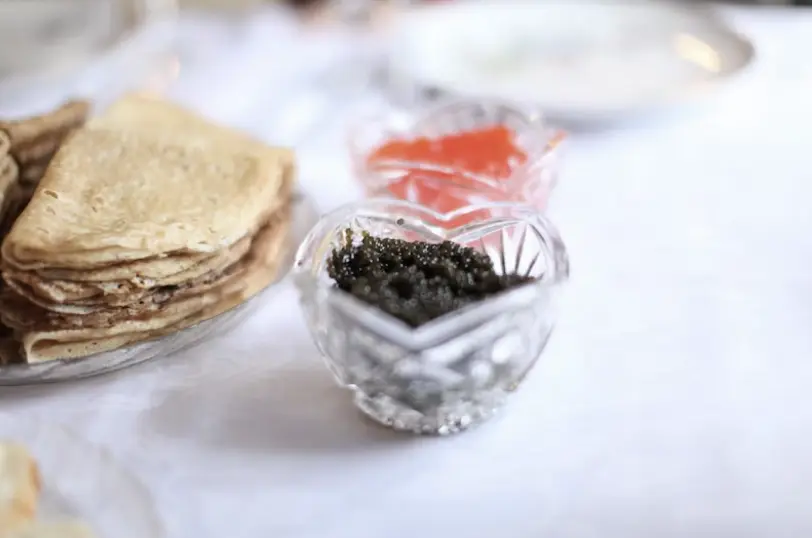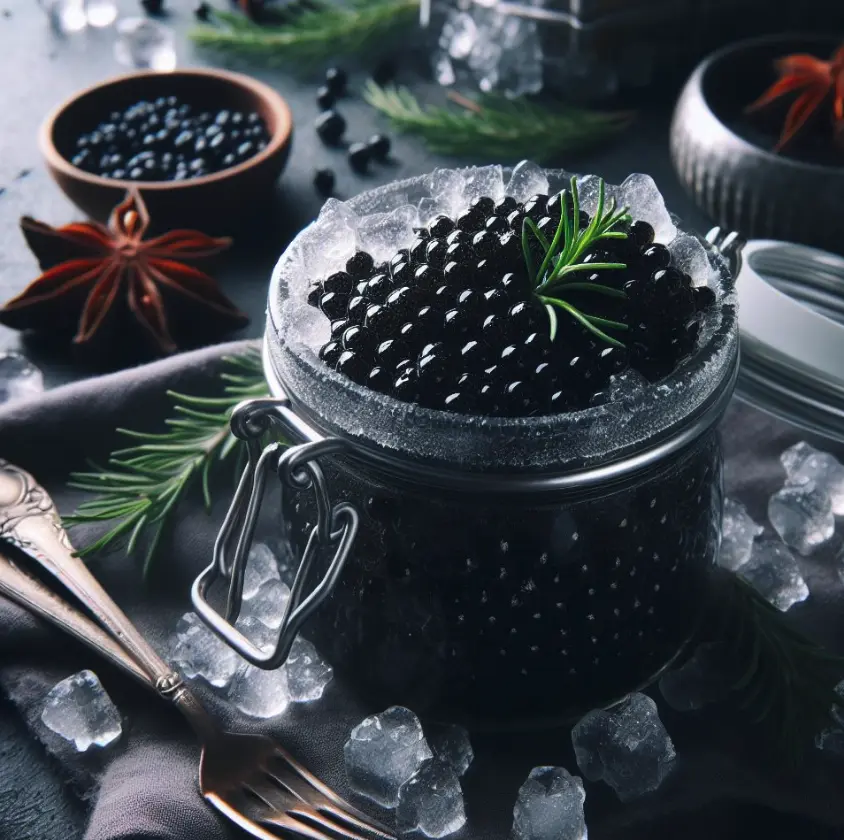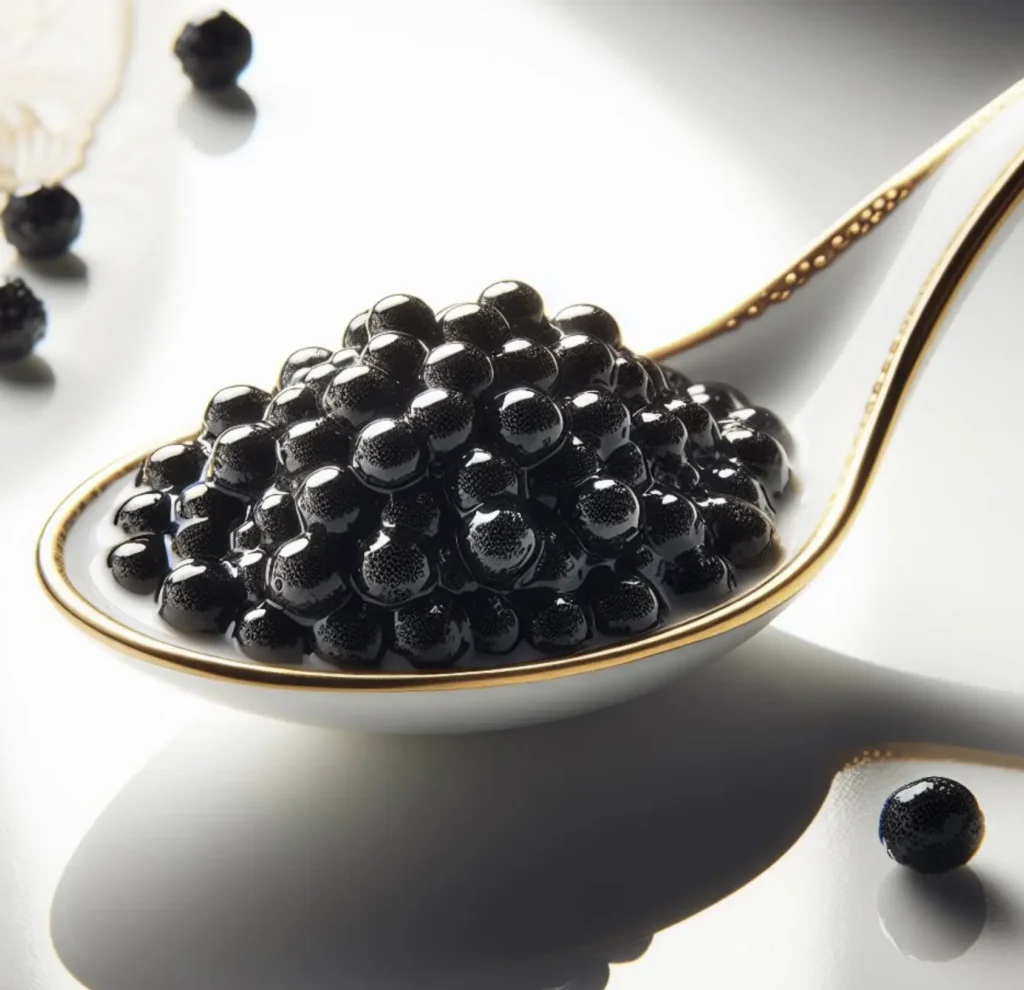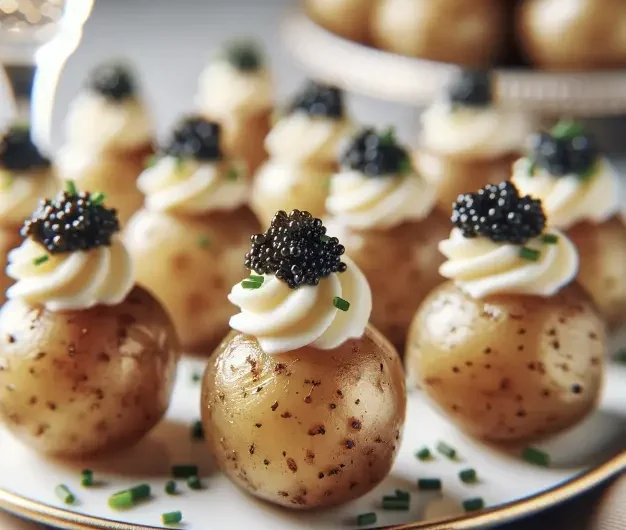Caviar Chronicles: The Delightful Delicacy from the Depths
You have to admit it; if you’ve tried caviar, you’re absolutely hooked! Am I right?! Caviar has graced the tables of the best restaurants and has been a symbol of luxury for centuries. Originating from the Caspian Sea, caviar’s reputation as a delicacy has soared over time. The delicate flavor and texture of the caviar, especially premium caviar like golden osetra caviar or black sturgeon caviar, make it a sought-after food item for special occasions. But the question remains: can you freeze caviar?

Photo Credit: Olga Pukhalskaya
But what exactly is caviar? At its core, caviar is fish eggs. But not just any fish eggs. Typically, caviar refers to the roe from wild sturgeon in the Caspian and Black Seas. However, many types of roe, from salmon caviar (often termed red caviar) to cowboy caviar, have entered the market, making the world of caviar as diverse as it is delicious.
The best caviar, some say, comes unpasteurized, which makes it a perishable item with a limited shelf life of caviar.
| Type of Caviar | Origin | Average Price per Ounce |
|---|---|---|
| Beluga | Caspian Sea | $200 |
| Osetra | Caspian Sea | $125 |
| Sevruga | Caspian Sea | $95 |
| American Paddlefish | Mississippi | $45 |
| Salmon Roe (Ikura) | North Pacific | $30 |
Preserving the fresh caviar’s delicate texture and flavor is a challenge. The general rule is to store caviar in the coldest part of your refrigerator, ideally just above freezing at around 28-30 degrees Fahrenheit. But with household refrigerators not always reaching these low temperatures, the question arises: can you freeze caviar to extend its shelf life?
In this article, we’ll weigh the pros and cons of freezing caviar and give you all the need-to-know information to freeze or not to freeze. Plus, we’ll share an incredible caviar and potato appetizer recipe that will leave you drooling for more!
The Big Chill: The Science of Freezing
Freezing is a common method to prolong the shelf life of many perishable items. By lowering the temperature, the growth of microorganisms that cause food spoilage is slowed down dramatically. However, when it comes to something as delicate as caviar, the freezing process can have adverse effects. Can you freeze caviar without compromising its quality? The good news is, yes, you can. But there’s a catch.
Caviar consists of delicate eggs that have a high water content. When water is frozen, it expands. This means that when you freeze caviar, there’s a risk of the eggs bursting, affecting the texture of the caviar. But if you’re looking to store caviar for a long time, freezing might be a better option than leaving it at room temperature or even in the back wall of your fridge.
So, what’s the best way to freeze caviar? For best results, place the jar of caviar or the airtight container in a sealed bag of ice or use dry ice. This ensures that the caviar freezes quickly, reducing potential damage to the caviar’s texture. When you’re ready to indulge, defrosting properly is crucial. Slowly bring the frozen caviar to fridge temperature before serving. Rapid temperature changes, like defrosting at room temperature, can further affect the delicate texture.
The Cold Truth: Caviar’s Transformation in the Tundra
The decision to freeze or not largely depends on the quality of caviar you possess. High-quality caviar, like the expensive caviar from the Caspian Sea, is best enjoyed fresh to savor its nuanced flavors. But if you’ve got a surplus of caviar leftovers or if you’re not a frequent fan of caviar, freezing might be the better option to avoid wasting this luxury item.
When frozen, the texture of the caviar undergoes changes. The eggs may become a bit firmer, and there might be a slight alteration in flavor. But for the casual caviar lover, these changes might be barely noticeable. It’s essential to ensure that the caviar is stored in smaller size containers, preferably in a vacuum-sealed container or tightly wrapped in plastic wrap to prevent freezer burn.
While top chefs and caviar connoisseurs might turn their noses up at the idea of freezing caviar, many households find this method a practical solution. After all, not everyone has the luxury of enjoying caviar within its typical 2-3 days expiry date after opening. So, can you freeze caviar? Yes, you can, but knowing how to do it right is the key to preserving as much of its original charm as possible.
Frozen Flavors: Does Temperature Impact Taste?
Temperature plays a pivotal role in how we perceive taste. It’s no surprise then that freezing caviar can alter its flavor profile. At colder temperatures, the aromatic oils and salts in the caviar become less strong, meaning they don’t release as much aroma. This can make frozen caviar taste milder compared to its fresh counterpart.
However, this doesn’t mean frozen caviar is devoid of flavor. Far from it. Once properly thawed, frozen caviar can still be a delightful treat. Some caviar enthusiasts even prefer the slightly firmer texture of frozen caviar as it offers a different mouthfeel.
The key to retaining the best flavor is ensuring that the freezing and defrosting process is done correctly. Quick temperature changes can have adverse effects on the flavor of caviar.

So, while fresh caviar is undoubtedly a treat, frozen caviar, when handled with care, can offer a delightful experience too. Whether you’re serving it on blinis with a dollop of sour cream or straight from a mother-of-pearl spoon, caviar, fresh or frozen, remains a luxurious indulgence.
Busting the Ice: Myths and Facts About Freezing Caviar
The age-old question, “can you freeze caviar,” has echoed through the many home kitchens. There’s a whirlwind of myths surrounding the freezing process of this delicacy, but let’s set the record straight. Contrary to the whispers in culinary circles, freezing caviar isn’t the end of the world. In fact, some caviar lovers swear by it. However, like all good things, there’s a right way and a not-so-right way to do it.

When you think of fresh caviar, the image that comes to mind is probably that of glistening fish eggs, served at room temperature, with a delicate texture that bursts with flavor in your mouth. Many believe that the freezing process could alter this delicate texture and flavor.
But here’s the good news: when done correctly, frozen caviar can retain its quality and give you the best flavor experience. This might come as a surprise to many, especially those who’ve been storing caviar in the coldest part of their refrigerator for a long time.
For those who’ve been using the coldest part of the fridge for storage, remember, that caviar’s texture is at its best when it’s stored at an ideal temperature. While household refrigerators can do a decent job, they might not always provide the consistency needed for a perishable item like caviar. Moreover, using metal spoons can also have adverse effects on the flavor of caviar. Instead, always opt for mother-of-pearl spoons to ensure the best results.
Serving It Cold: Best Practices for Presenting Frozen Caviar
So, you’ve taken the plunge and decided to freeze your premium caviar. But how do you serve frozen caviar without compromising its essence? The best way to present this food item is by understanding the defrosting process.
Remember, caviar, especially high-quality caviar like golden osetra caviar or black sturgeon caviar, deserves the best practices when it comes to serving. Start by placing your container of caviar in a bowl of ice to gradually bring it to the desired temperature. Avoid direct contact with water, and instead, let the surrounding cold temperature do its magic.
Now, let’s talk containers. A glass container or a vacuum-sealed container is your best option for storing caviar, but when it comes to serving, ensure that the container is airtight. The last thing you want is for your precious fish roe to be exposed to air for too long.
If you’ve stored your caviar in smaller size containers, only open the amount you plan to consume. Leftover caviar? Seal it with plastic wrap to ensure minimal air exposure. And if you’re using a metal container, be sure to place it at the back wall of your refrigerator, which is often the coldest spot.
For the caviar lover who loves to dine in style, presentation is key. Whether it’s for special occasions or a quiet evening with loved ones, serve your caviar with a little salt, sour cream, or even cowboy caviar on the side. A jar of caviar, when presented well, can elevate the dining experience. And always, always use a mother-of-pearl spoon to maintain the best flavor. Metal can interfere with the delicate flavor of the caviar, so it’s best to avoid it.
pros and cons: Weighing the Freeze Factor
The journey of understanding “can you freeze caviar” brings us to our final step – weighing the pros and cons. The good idea here is that freezing caviar can indeed extend the shelf life of caviar. Especially for those who don’t consume their caviar within 2-3 days of purchase, freezing can be a better option.
However, like all things luxurious, caviar demands respect. From the types of roe to the storage methods, every detail counts. Expensive caviar, like that from the Caspian Sea, deserves the utmost care.
Top chefs often have differing opinions on freezing caviar. While some vouch for the freshness of caviar that’s consumed immediately, others find the convenience of extending the caviar shelf life through freezing a lifesaver. In the end, it’s all about personal preference.
If you eat it frequently, perhaps storing it in the coldest part of your refrigerator and consuming it at room temperature is your best bet. But if you’re one to save it for special occasions, freezing might just be your saving grace.
FAQs
What Happens When You Freeze Caviar?
Freezing caviar is like putting a pause button on its freshness. But, it’s a delicate affair:
- Texture Changes: Freezing can alter the roe’s delicate texture, potentially leading to softer, less firm eggs upon thawing.
- Flavor Preservation: While freezing may preserve the flavor to an extent, subtle nuances might be lost.
- Risk of Freezer Burn: Like any frozen food, caviar is prone to freezer burn if not properly sealed.
How Long Does Caviar Last in the Fridge?
Refrigeration is the MVP for caviar storage:
- Unopened: Properly refrigerated, unopened caviar can last up to 4 weeks.
- Opened: Once the seal breaks, enjoy it within 3 days to savor its peak taste.
The Best Way to Store Caviar
Caviar demands VIP treatment:
- Chill It: Keep it in the coldest part of your fridge, usually the back.
- Original Packaging: Retain its original jar or tin.
- Avoid Air: Minimize air exposure with plastic wrap.
- Upside Down: Store the container upside down to distribute oils evenly.
How Do You Unfreeze Caviar?
Thawing caviar is a slow dance:
- Refrigerator Thawing: Transfer it from freezer to fridge a day before.
- Consistency is Key: Let it thaw gradually to maintain texture.
- Avoid Water Contact: Water can ruin its delicate flavor.
Is Frozen Caviar Good?
Frozen caviar can still be a treat:
- Quality Retention: Good freezing practices retain much of its quality.
- Taste Variation: Some connoisseurs note a slight difference in taste.
- Perfect for Cooking: Ideal for recipes where texture isn’t the star.
And hey, while you’re holding onto all that caviar, why not try our out of this world Caviar-Stuffed Baby Potatoes with Crème Fraîche and Chives!
You’ll probably never look at potatoes (or caviar, for that matter!) the same after just one delicious bite! Share your experience with us and don’t forget to share this article with other adventurous cooks out there!
Caviar-Stuffed Baby Potatoes with Crème Fraîche and Chives
Course: DinnerCuisine: AmericanDifficulty: Medium8
servings20
minutes30
minutesGet ready to impress your dinner guests with this elegant yet easy-to-make appetizer! These caviar-stuffed baby potatoes are the perfect blend of rustic charm and luxurious indulgence. The creamy crème fraîche complements the salty pop of the caviar, while the chives add a touch of freshness.
Ingredients
24 baby potatoes (preferably red or golden)
2 tablespoons olive oil
Sea salt, for seasoning
1 cup crème fraîche (or sour cream as an alternative)
4 ounces of high-quality caviar (choose based on your preference and budget)
Fresh chives, finely chopped
Freshly ground black pepper, for seasoning
Directions
- Prep the Potatoes:
- Preheat your oven to 400 degrees Fahrenheit (205 degrees Celsius).
- Wash and dry the baby potatoes. Toss them in olive oil and a sprinkle of sea salt.
- Arrange the potatoes on a baking sheet, ensuring they’re spaced out evenly.
- Roast to Perfection:
- Place the baking sheet in the oven and roast the potatoes for about 25-30 minutes, or until they’re tender when pierced with a fork.
- Once done, remove from the oven and let them cool enough to handle.
- Prep for Filling:
- Carefully slice off the top of each potato. Using a melon baller or small spoon, scoop out a small cavity from each potato, ensuring not to break through the bottom.
- Sprinkle a little salt inside each scooped-out potato.
- Fill ‘Em Up:
- Place a small dollop of crème fraîche into each potato cavity.
- Top with a generous spoonful of caviar.
- Sprinkle freshly chopped chives on top and season with a touch of freshly ground black pepper.
- Serve and Impress:
- Arrange the stuffed potatoes on a stylish serving platter. If you’re feeling extra fancy, place the platter on a tray filled with crushed ice to keep the caviar chilled.
- Serve immediately and watch your guests’ eyes light up with delight!
Craving more delicious recipes? Try these: Pakistani Cholay

